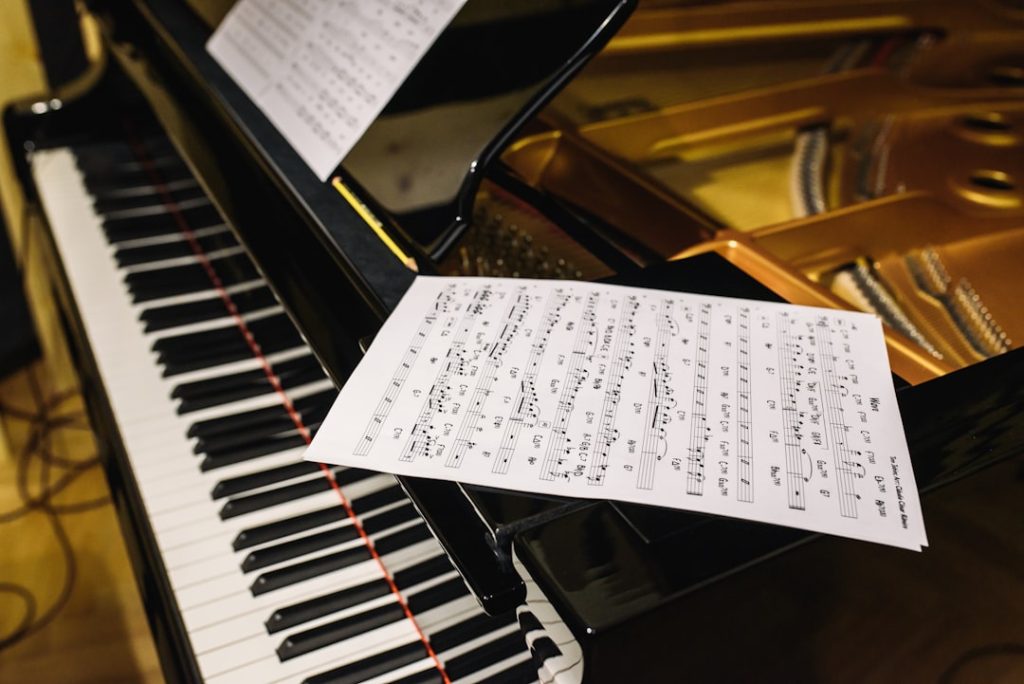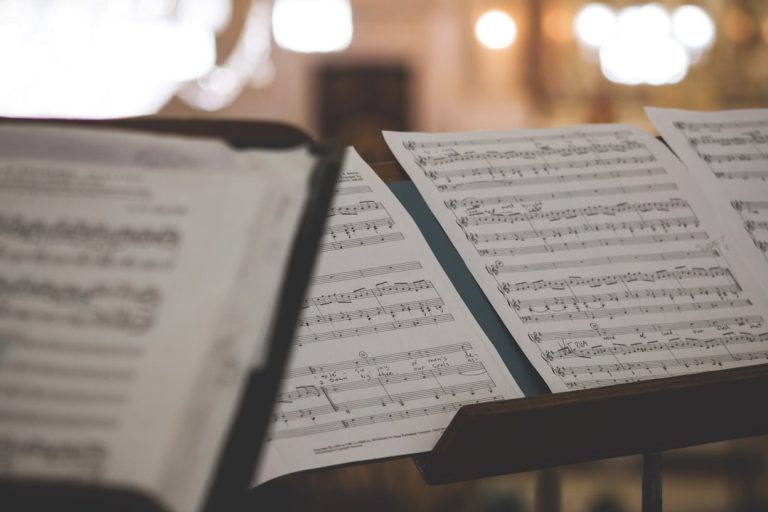
Metaphor and imagery serve as the backbone of many song lyrics, allowing artists to convey complex emotions and ideas in a compact form. Through the use of vivid imagery, songwriters can paint pictures that resonate deeply with listeners, evoking feelings that might otherwise be difficult to articulate. For instance, consider the metaphor of a “broken heart”—a phrase that transcends its literal meaning to encapsulate feelings of loss, despair, and longing.
This metaphor is not merely a cliché; it is a powerful tool that allows listeners to connect their personal experiences with the universal themes of love and heartbreak.
Imagery in song lyrics can also transport listeners to specific places or moments in time, enhancing the emotional weight of the narrative.
Take Bob Dylan’s “Tangled Up in Blue,” where he employs rich imagery to weave together disparate stories and characters. The song’s vivid descriptions of landscapes, weather, and personal interactions create a tapestry that immerses the listener in the protagonist’s journey. Each line is laden with visual cues that evoke a sense of nostalgia and longing, demonstrating how imagery can elevate a song from mere words to an evocative experience.
The power of metaphor and imagery lies in their ability to transcend language barriers, allowing listeners from diverse backgrounds to find common ground in shared emotions.
Key Takeaways
- Metaphors and imagery in song lyrics can evoke powerful emotions and create vivid mental images for listeners.
- Songwriting often unpacks complex emotions and themes, providing a platform for artists to express their innermost feelings and experiences.
- Personal experiences play a significant role in shaping the content and tone of song lyrics, allowing artists to connect with their audience on a deeper level.
- Symbolism and allegory in lyrics can add layers of meaning and depth to a song, inviting listeners to interpret the music in their own unique ways.
- Song lyrics often serve as a platform for social and political commentary, allowing artists to address important issues and provoke thought and discussion.
Unpacking the Emotions and Themes in Songwriting
Songwriting is an intricate dance of emotions and themes, where artists distill their innermost feelings into melodies and lyrics. The emotional landscape of a song often reflects the songwriter’s personal experiences, yet it also taps into universal themes that resonate with a broader audience. For example, themes of love, loss, resilience, and hope are prevalent across genres, serving as touchstones for listeners navigating their own emotional journeys.
A poignant example can be found in Adele’s “Someone Like You,” where the themes of heartbreak and acceptance are explored with raw honesty. The emotional depth of the lyrics, combined with Adele’s powerful vocal delivery, creates an atmosphere that invites listeners to reflect on their own experiences with love and loss. Moreover, the exploration of emotions in songwriting often involves a delicate balance between vulnerability and strength.
Artists like Taylor Swift have mastered this balance by sharing personal stories that reveal their vulnerabilities while simultaneously empowering listeners to embrace their own narratives. In songs like “Shake It Off,” Swift addresses themes of resilience in the face of criticism, encouraging listeners to rise above negativity. This duality—acknowledging pain while promoting strength—creates a rich emotional tapestry that resonates deeply with audiences.
By unpacking these emotions and themes, songwriters not only express their own truths but also create a space for listeners to explore their feelings and find solace in shared experiences.
The Influence of Personal Experience on Songwriting

Personal experience is often the wellspring from which songwriters draw inspiration, shaping their narratives and infusing their work with authenticity. Many artists channel their life events—be it heartbreak, joy, or existential musings—into their music, creating a direct line between their experiences and the songs they produce. For instance, Bruce Springsteen’s “Born to Run” is not just an anthem for escapism; it reflects his own struggles with identity and desire for freedom.
The lyrics encapsulate the yearning for something greater, resonating with anyone who has felt trapped by their circumstances. Springsteen’s ability to translate his personal journey into a collective experience exemplifies how individual stories can resonate on a universal scale. Additionally, personal experiences often serve as catalysts for creativity, prompting songwriters to explore themes that may be uncomfortable or challenging.
For example, Fiona Apple’s “Extraordinary Machine” delves into her struggles with mental health and societal expectations. By confronting her vulnerabilities through her music, Apple not only provides insight into her own life but also opens up conversations about mental health that many listeners may find relatable. This willingness to share personal experiences fosters a sense of connection between the artist and the audience, creating an intimate bond that transcends the music itself.
The influence of personal experience in songwriting underscores the importance of authenticity; when artists share their truths, they invite listeners to reflect on their own lives and find meaning within the shared human experience.
Analyzing the Use of Symbolism and Allegory in Lyrics
| Lyrics | Symbolism | Allegory |
|---|---|---|
| Song 1 | Metaphors, imagery | Political commentary |
| Song 2 | Symbols of nature | Social inequality |
| Song 3 | Religious symbols | Historical events |
Symbolism and allegory are powerful literary devices that enrich song lyrics by adding layers of meaning and inviting deeper interpretation. Through symbolism, songwriters can convey complex ideas without explicitly stating them, allowing listeners to engage with the music on multiple levels. For instance, in Leonard Cohen’s “Suzanne,” the river serves as a symbol of both love and longing, representing the fluidity of relationships and the passage of time.
The imagery surrounding Suzanne creates an allegorical narrative that speaks to broader themes of desire and spiritual connection. By employing symbolism, Cohen invites listeners to explore their interpretations while grounding them in relatable emotions. Allegory takes this concept further by constructing entire narratives that reflect broader societal or philosophical themes.
A notable example is Childish Gambino’s “This Is America,” which uses allegorical elements to comment on gun violence and systemic racism in American society. The juxtaposition of celebratory music with disturbing imagery creates a stark contrast that forces listeners to confront uncomfortable truths about their culture. This use of allegory not only enhances the song’s impact but also encourages critical reflection on societal issues.
By analyzing symbolism and allegory in lyrics, one can uncover hidden meanings that enrich the listening experience and provoke thought about larger themes within society.
Exploring the Social and Political Commentary in Song Lyrics
Song lyrics have long served as a platform for social and political commentary, allowing artists to voice their opinions on pressing issues while inspiring change through their music. From protest songs of the 1960s to contemporary anthems addressing social justice movements, musicians have harnessed their art to challenge the status quo and advocate for change. For example, Billie Holiday’s “Strange Fruit” is a haunting portrayal of racial violence in America, using stark imagery to confront listeners with the brutal realities of lynching.
The song’s emotional weight lies not only in its haunting melody but also in its unflinching examination of systemic racism—a theme that remains relevant today. In more recent years, artists like Kendrick Lamar have continued this tradition by addressing issues such as police brutality and systemic inequality through their lyrics.
His ability to weave personal narratives with broader social commentary creates a powerful connection between his experiences and those of his audience. By exploring social and political themes in their lyrics, songwriters not only raise awareness but also empower listeners to engage with critical issues affecting their communities.
The Role of Poetry and Literary Devices in Songwriting

The intersection of poetry and songwriting is evident in the way artists employ literary devices to enhance their lyrical compositions. Techniques such as alliteration, assonance, rhyme schemes, and meter contribute to the musicality of lyrics while also enriching their meaning. For instance, the use of alliteration in Eminem’s verses creates a rhythmic flow that captivates listeners while emphasizing key themes within his narratives.
His intricate wordplay showcases how poetic devices can elevate songwriting from mere storytelling to an art form that demands attention. Moreover, many songwriters draw inspiration from classic poetry, infusing their lyrics with literary depth that resonates with audiences on an intellectual level. The influence of poets like Sylvia Plath or Rainer Maria Rilke can be seen in the works of artists such as Florence Welch from Florence + The Machine or Sufjan Stevens.
Their ability to blend poetic sensibilities with musical expression results in songs that are not only sonically engaging but also rich in metaphorical language and emotional resonance. By incorporating poetry into songwriting, artists create multidimensional works that invite listeners to explore deeper meanings while enjoying the beauty of language.
Examining the Cultural and Historical Context of Song Lyrics
Understanding the cultural and historical context surrounding song lyrics is essential for appreciating their significance fully. Music often reflects societal values, struggles, and transformations at specific points in history, serving as both a mirror and a catalyst for change. For example, during the civil rights movement, songs like Sam Cooke’s “A Change Is Gonna Come” became anthems for hope and resilience amidst oppression.
The historical context surrounding this era imbues the lyrics with profound meaning; they resonate not only as expressions of individual struggle but also as calls for collective action against injustice. Similarly, examining cultural influences can shed light on how genres evolve over time. The emergence of hip-hop in the late 20th century was deeply rooted in socio-economic conditions faced by marginalized communities in urban America.
Artists like Grandmaster Flash used their lyrics to narrate stories of survival amidst poverty and violence while simultaneously celebrating cultural identity through music. This historical lens allows listeners to appreciate how songs serve as documentation of lived experiences within specific cultural contexts—transforming them into powerful vehicles for storytelling that transcend generations.
The Connection Between Music and Language in Songwriting
The relationship between music and language is intricate; both serve as forms of expression that communicate emotions, ideas, and narratives. In songwriting, this connection becomes particularly evident as artists blend lyrical content with melodic structure to create cohesive works that resonate with audiences on multiple levels. The rhythm of language plays a crucial role in shaping how lyrics are delivered; syllable patterns can enhance or detract from a song’s overall impact depending on how they align with musical elements such as tempo or melody.
Furthermore, language itself is inherently musical—its cadence, intonation, and phonetic qualities contribute to its emotive power. Consider how different languages convey emotion through sound; for instance, Spanish has a lyrical quality that lends itself well to romantic ballads while English often employs clever wordplay or puns within its lyrical compositions. This linguistic diversity enriches global music culture by allowing artists from various backgrounds to express themselves uniquely while drawing upon shared human experiences through song.
Ultimately, understanding this connection between music and language deepens our appreciation for songwriting as an art form that transcends cultural boundaries while celebrating our shared humanity through sound.
If you’re interested in exploring song lyrics further, you may want to check out the eBooks available on Sersea.ink. These eBooks offer in-depth analysis and interpretations of various songs, providing a deeper understanding of the lyrics and their meanings. Additionally, you can visit Sersea.ink for more articles and resources related to song lyrics exploration. Happy exploring!
FAQs
What is song lyrics exploration?
Song lyrics exploration is the analysis and interpretation of the lyrics of a song. It involves examining the themes, emotions, and messages conveyed in the lyrics, as well as the cultural and historical context in which the song was created.
Why is song lyrics exploration important?
Song lyrics exploration is important because it allows listeners to gain a deeper understanding of the meaning and significance of a song. It can provide insight into the artist’s intentions, as well as the social and cultural influences that may have shaped the lyrics.
What are some common themes explored in song lyrics?
Common themes explored in song lyrics include love, heartbreak, social and political issues, personal struggles, and self-discovery. Song lyrics can also touch on themes related to identity, empowerment, and resilience.
How can song lyrics exploration enhance the listening experience?
Exploring song lyrics can enhance the listening experience by providing a deeper connection to the music. It can help listeners relate to the emotions and experiences expressed in the lyrics, and gain a greater appreciation for the artistry and craftsmanship of the songwriting.
What are some techniques used in song lyrics exploration?
Techniques used in song lyrics exploration include close reading of the lyrics, analyzing the use of metaphor and symbolism, examining the narrative structure of the song, and considering the cultural and historical context in which the song was created. Researchers may also explore the biographical background of the songwriter and the reception of the song by audiences.






